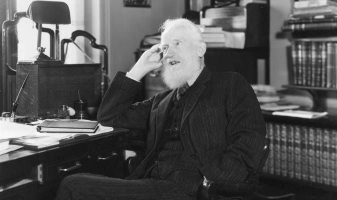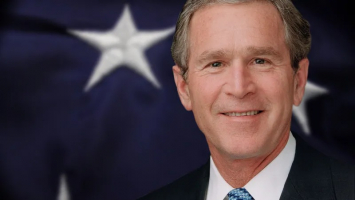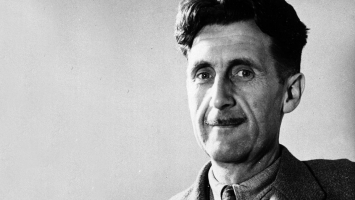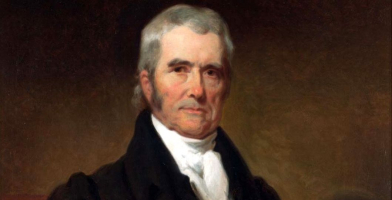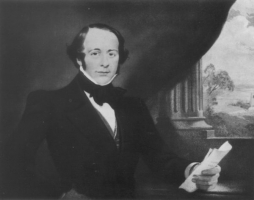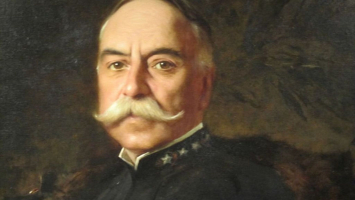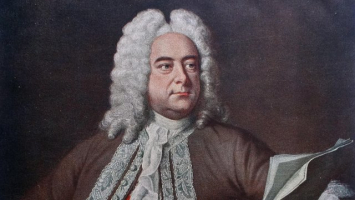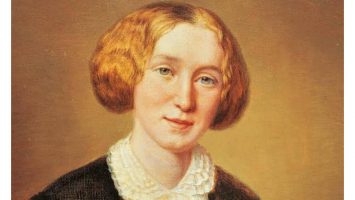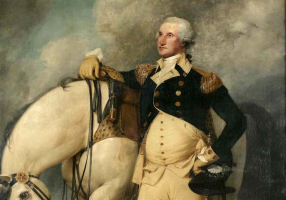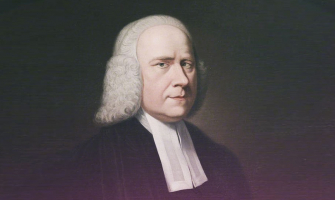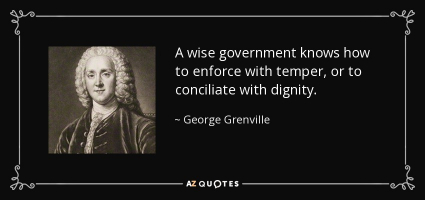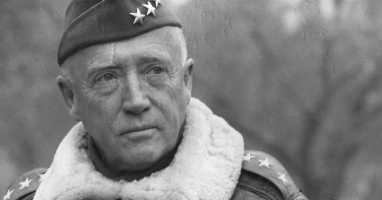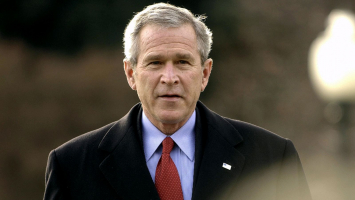Top 7 Interesting Facts about George Marshall
George Catlett Marshall Jr. GCB (December 31, 1880 - October 16, 1959) was an American statesman and army officer. He advanced through the ranks of the United ... read more...States Army to become Chief of Staff of the United States Army under Presidents Franklin D. Roosevelt and Harry S. Truman, and then became Secretary of State and Secretary of Defense under Truman. Winston Churchill referred to Marshall as the "organizer of victory" for his role in leading the Allies to victory in WWII. Here are the 7 interesting facts about George Marshall you should know.
-
One of the most interesting facts about George Marshall is that Marshall graduated from the Virginia Military Institute. Having decided early in life that he wanted to be a soldier but was unlikely to get into the United States Military Academy due to his average grades, he turned to the Virginia Military Institute (VMI) for formal schooling. Stuart Marshall, a VMI alumnus, feared George would fail and argued that their mother should not allow George to enroll because he would disgrace the family name. Marshall, on the other hand, enlisted at the age of sixteen in December 1897. Marshall's mother sold land she owned in Uniontown and Augusta, Kentucky, to pay for his tuition and expenses.
Marshall was subjected to hazing at the start of his collegiate career, in which upperclassmen instructed him to squat over an unsheathed bayonet with the point up. Marshall fainted and fell after twenty minutes. He awoke with a serious laceration in one of his buttocks. Marshall declined to tell his classmates about his injury while he was being treated. The hazers, impressed with his bravery, never troubled him again.
Marshall was always first in military discipline and around midway in academics during his time at VMI. He graduated 15th out of 34 in the Class of 1901, earning the rank of the first captain, the highest a cadet could achieve. Marshall obtained a certificate rather than a degree. The top five or six VMI alumni obtained bachelor's degrees at the time of their graduation. The remaining students received diplomas attesting to their graduation status. He was an offensive tackle on the football team and was named All-Southern in 1900.
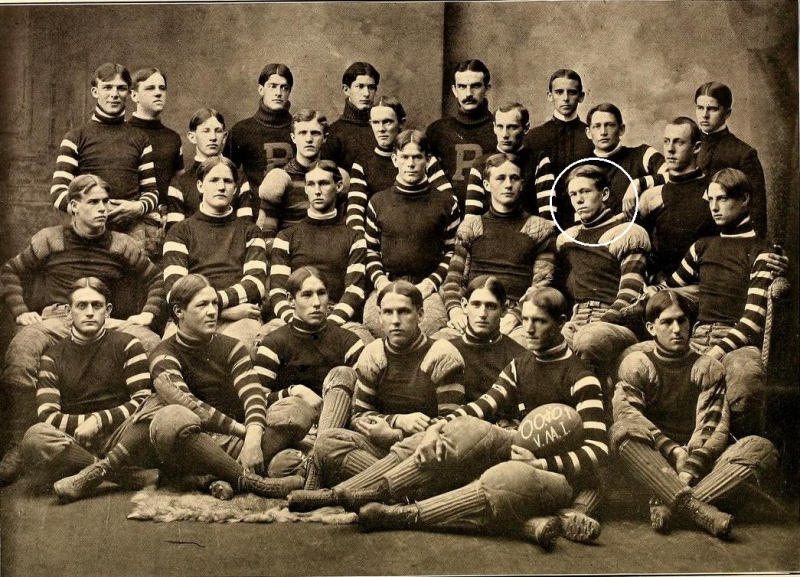
1900 VMI Keydets football team and Marshall circled - en.wikipedia.org 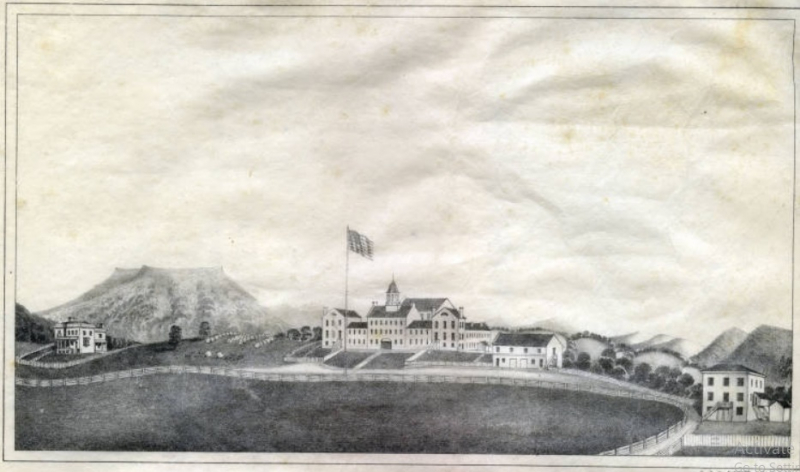
The Virginia Military Institute -vmi.contentdm.oclc.org -
It is a fact that he had an impressive early infantry career. Marshall went on to serve as Commandant of Students at Danville Military Institute in Danville, Virginia, after graduating from VMI. He applied for a commission in the United States Army, which had been significantly expanded to deal with the Spanish-American War and the Philippine-American War. Marshall was elected and used endorsements from both of Pennsylvania's U.S. Senators to strengthen his application. VMI Superintendent Scott Shipp also endorsed Marshall's application, comparing him favorably to other VMI alumni serving in the Army, saying Marshall was fully the equal of the best. In February 1902, he was commissioned as a second lieutenant of infantry.
Prior to World War I, Marshall served as an infantry platoon leader and company commander throughout the Philippine-American War and other guerrilla movements in the United States and the Philippines. He received training in modern warfare, including a tour as both a student and a teacher at Fort Leavenworth, Kansas, from 1906 to 1910. He graduated first in his Army Staff College class in 1908 and was the Honor Graduate of his Infantry-Cavalry School Course in 1907.
Marshall returned to the Presidio of San Francisco in 1916 after serving as aide-de-camp to the commander of the Western Department, former Army chief of staff Major General J. Franklin Bell. Marshall and Bell traveled to Governors Island, New York after the United States declared war on Germany in April 1917, when Bell was posted as head of the Department of the East. Marshall was soon sent to help oversee the mobilization of the 1st Division for service in France.
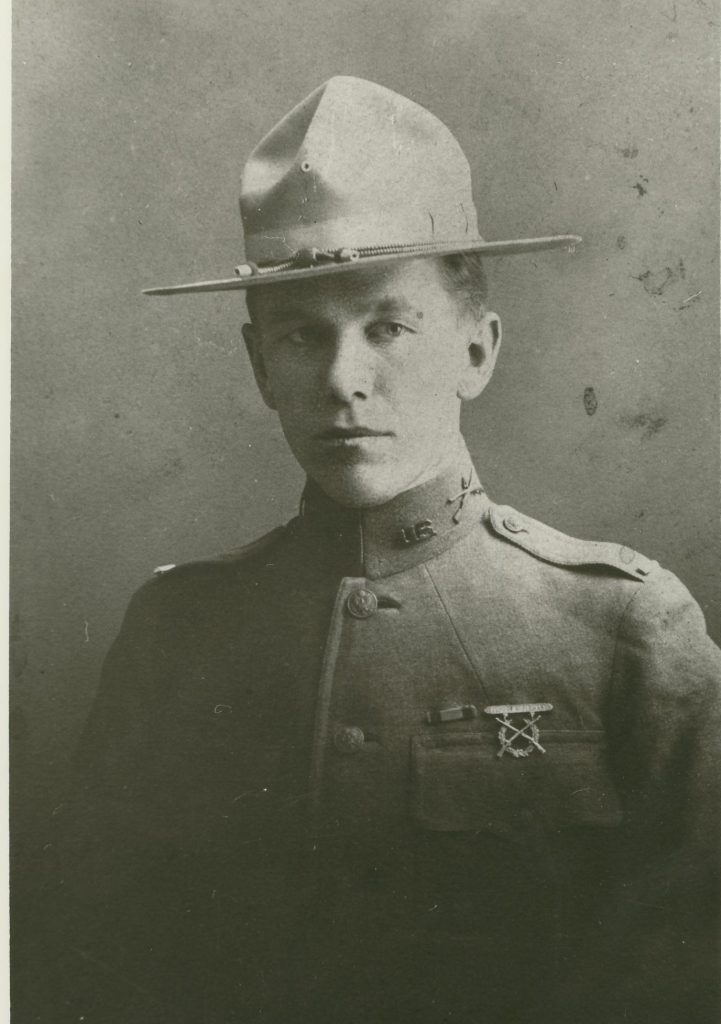
marshallfoundation.org 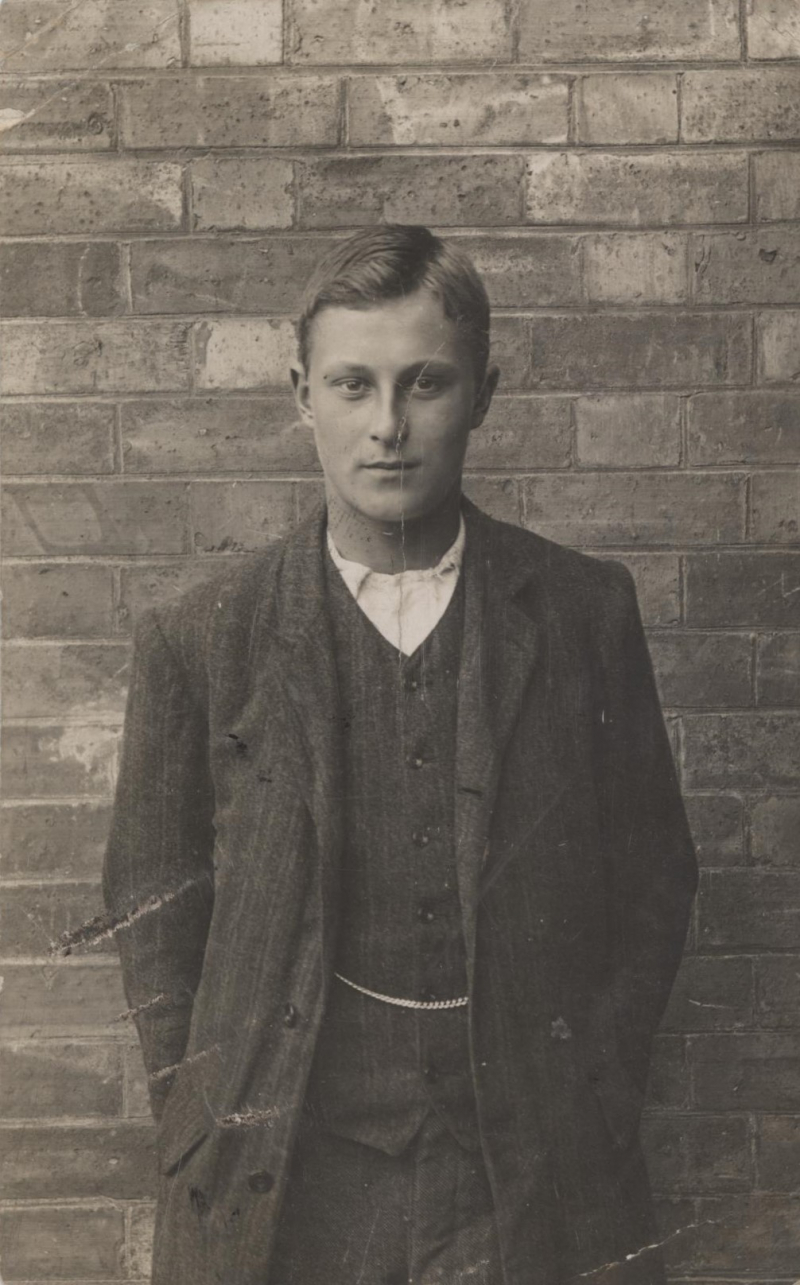
badseysociety.uk -
One of the most interesting facts about George Marshall is that Marshall received recognition for his role in planning the Battle of Cantigny. Marshall served with the 1st Division on the fronts of St. Mihiel, Picardy, and Cantigny after arriving in France. The commander of the American Expeditionary Force, John J. Pershing, inspected the 1st Division in late 1917. Pershing, unimpressed by what he saw, began to scold division commander William L. Sibert in front of Sibert's staff. Sibert remained silent on the matter of Pershing's criticism, but when Pershing turned his attention to the division chief of staff, Marshall angrily interceded to alert Pershing about logistical and administrative challenges that Pershing was unaware of. Marshall also notified Pershing that the AEF staff had been unhelpful in dealing with the difficulties. Marshall's courage to challenge Pershing had likely cost him his career, according to the division commander and his staff. Instead, Pershing began to seek Marshall out and seek his advice.
Marshall received praise and admiration for his role in organizing the Battle of Cantigny, which took place from May 28 to May 31, 1918. Marshall's triumph was the first important American victory of the war. Marshall traveled alone under cover of darkness to personally observe and mentally map the area as part of his pre-attack planning. Marshall frequently walked beyond the front lines and into no man's land, often under friendly artillery fire and risking discovery and capture by German troops. He was injured on May 26 while traveling to many subordinate units for pre-attack coordination. Marshall's horse faltered, collapsed, and rolled over as he exited the division headquarters area; his left foot got trapped in the stirrup, and he suffered a severe sprain and bruise. Marshall's injured ankle and foot were taped together by a doctor so he could escape medical evacuation and stay with the division to oversee the attack. Marshall was given the Citation Star for his bravery during this engagement in 1920.
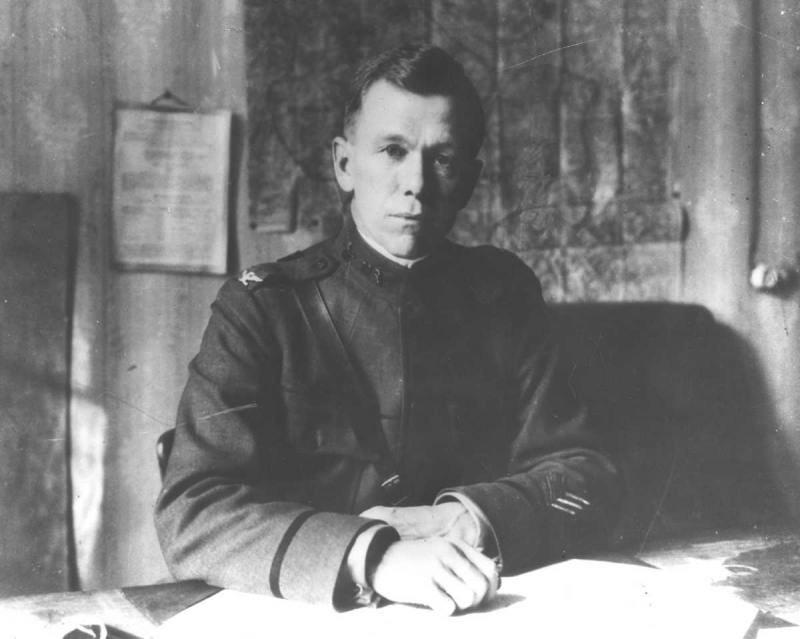
marshallfoundation.org 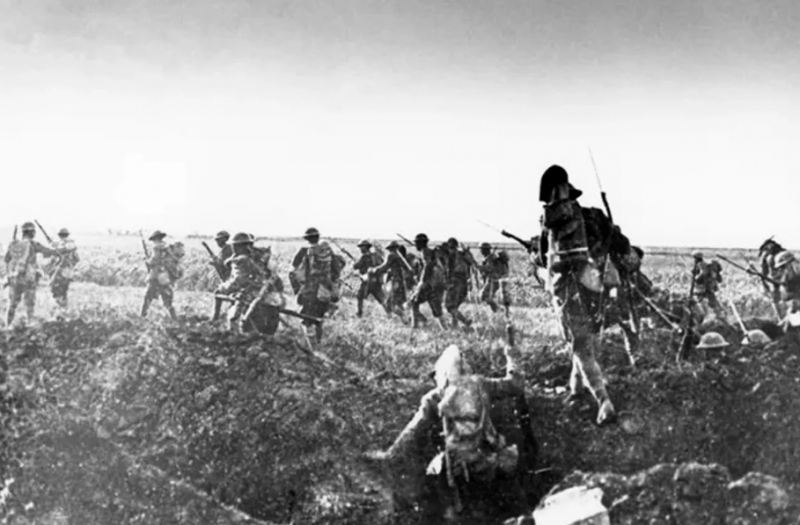
The Battle of Cantigny -salon.com -
An interesting fact about George Marshall is that he expanded the military force fortyfold. As Chief of Staff, Marshall oversaw the largest military expansion in US history, taking over an outmoded, poorly equipped army of 189,000 men and, in part, drawing on his experience teaching and developing modern warfare techniques as an instructor at the Army War College, coordinating the large-scale expansion and modernization of the US Army. Beginning in July 1940, he was heavily aided in this effort by Henry Stimson, the newly appointed Secretary of War. Marshall was a great organizer with a penchant for encouraging other officers, despite the fact that he had never actually led troops in combat.
Faced with the need to transform an army of former citizens into a force of more than eight million soldiers by 1942 (a fortyfold increase in three years), Marshall urged McNair, commander of Army Ground Forces, to concentrate efforts on rapidly creating enormous numbers of soldiers. With the exception of airborne troops, Marshall agreed to McNair's suggestion for a shorter training schedule for men entering Army land forces training, notably in terms of basic infantry abilities, weapon competence, and combat tactics. At the time, most lower-level US commanders had little or no combat experience. Many resorted to formulaic training methods emphasizing static defense and orderly large-scale advances by motorized convoys along improved roads in the absence of feedback from experienced British or Allied combat officers on the nature of modern warfare and enemy tactics. As a result, Army forces going to Africa as part of Operation Torch suffered significant initial reverses when they encountered German armored combat formations in the Battle of Kasserine Pass and other major battles. Even as late as 1944, American soldiers completing stateside training in preparation for deployment against German forces in Europe were not trained on the combat procedures and tactics used there.
Marshall may have facilitated the largest military extension in US history. This was a feat he accomplished in three years thanks to his involvement with the Army War College and his unique ability to persuade officials. By 1942, the United States had over 8,000,000 fighters.
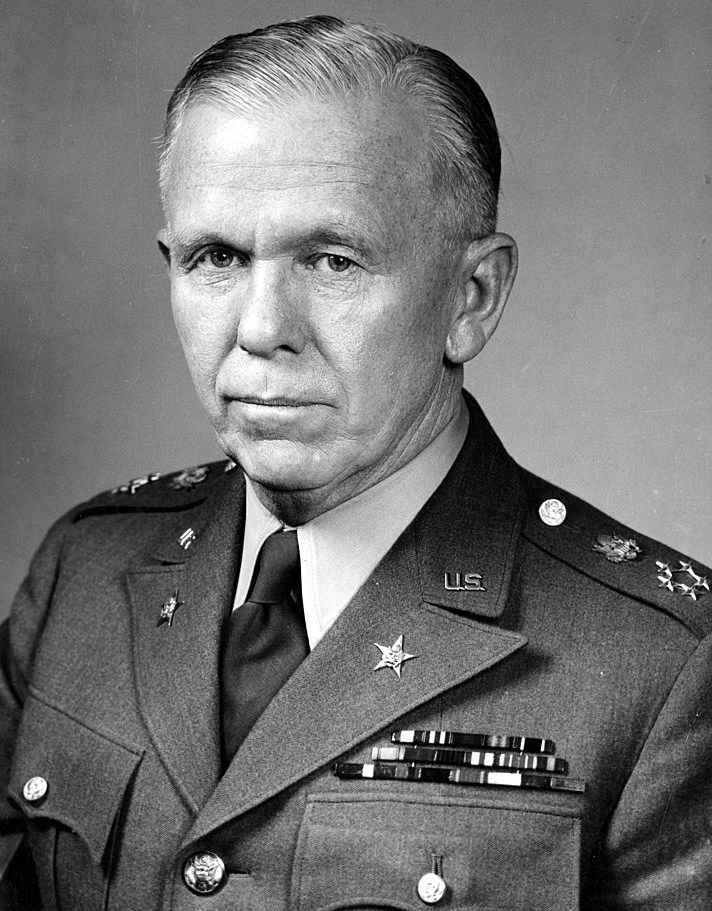
en.wikipedia.org 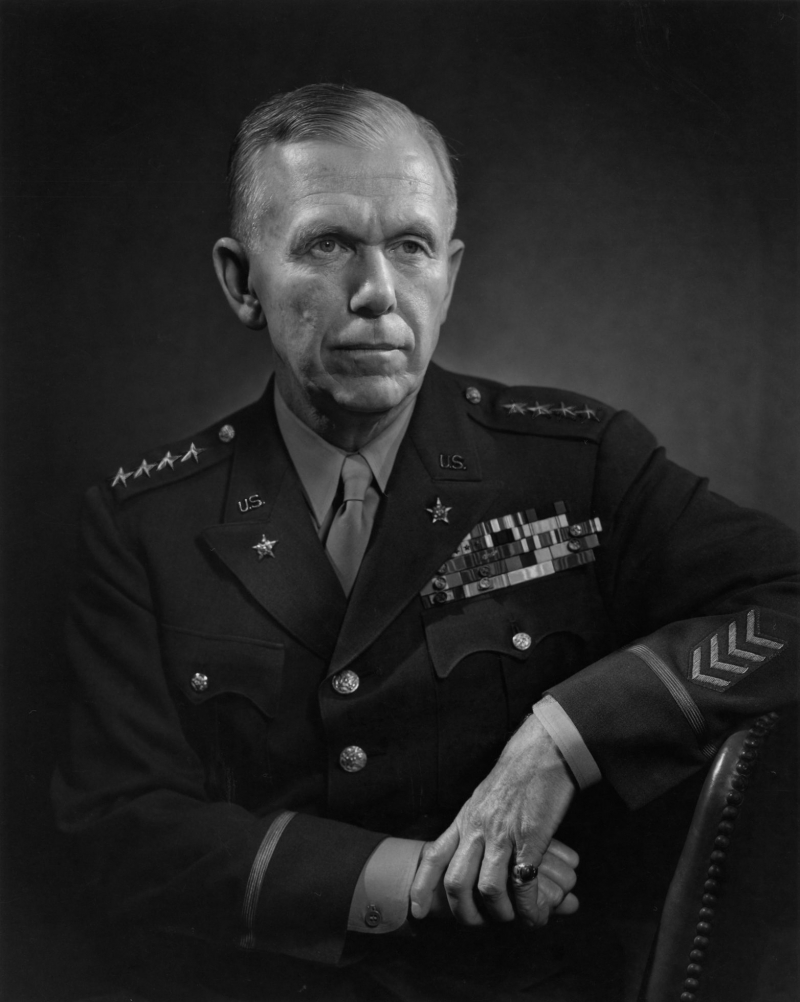
karsh.org -
One of the most interesting facts about George Marshall is that he was appointed to be Secretary of State in 1947. Truman appointed Marshall Secretary of State upon his return to the United States in early 1947. He was a great front-office personality since he was one of the most well-regarded and least politicized national leaders. He was appointed as the State Department's spokesman for the grandiose ambitions to rebuild Europe. He did not create the plans and paid little attention to details or negotiations. He was not current on foreign affairs. He was never a workaholic, according to one biographer. He delegated significant responsibilities to his deputies, particularly Under-Secretary Robert A. Lovett, and refused to be bothered by detail. His participation was further restricted by 1948 due to frailties building up. "The fact of the matter is that Lovett bears the principal burden as I get away whenever possible", Marshall explained.
Marshall resigned as Secretary of State on January 7, 1949, due to illness. Throughout his stint in the role, he was terribly weary. In late 1947, Dean Acheson described himself as "a four-engine bomber going only on one engine." Truman appointed him to the somewhat ceremonial posts of chairman of the American Battle Monuments Commission and president of the American Red Cross.
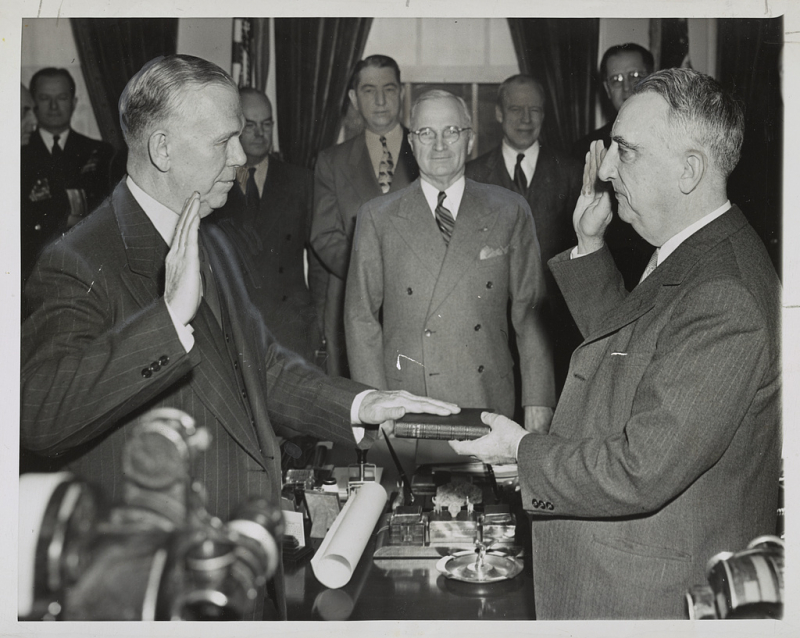
picryl.com 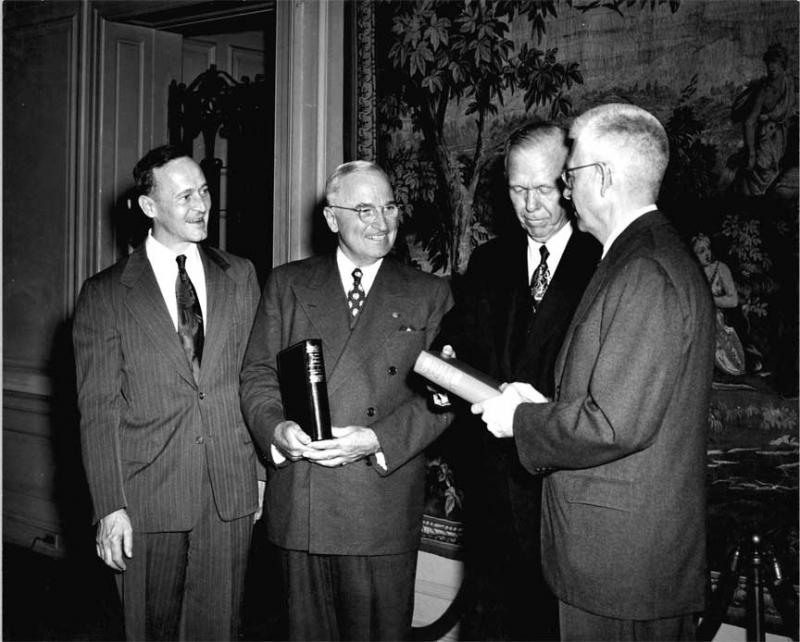
historycentral.com -
Another interesting fact is that he was appointed to be Secretary of Defense in September 1950. When the early months of the Korean War revealed the Defense Department's lack of preparedness, President Truman removed Secretary Louis A. Johnson and appointed Marshall as Secretary of Defense in September 1950. Because the National Security Act of 1947 forbade a uniformed military officer from serving in the post, the appointment required a congressional waiver. Marshall was included in this limitation because individuals promoted to General of the Army are not actually retired, but remain formally on active duty long after their active service has ended. Marshall was the first to be granted such a waiver; in 2017, Jim Mattis became the second, and General Lloyd Austin got the third in January 2021. Marshall's primary responsibility as Secretary of Defense was to restore trust and morale to the Defense Department while rebuilding the armed forces following their demobilization during World War II.
Marshall worked to increase manpower to meet the demands of both the Korean War and the European Cold War. Marshall assembled a new leadership team to carry out his aims, including Robert A. Lovett as his deputy and Anna M. Rosenberg, former chairman of the War Manpower Commission, as assistant secretary of defense for manpower. He also tried to repair the ties between the Defense and State Departments, as well as the Secretary of Defense and the Joint Chiefs of Staff.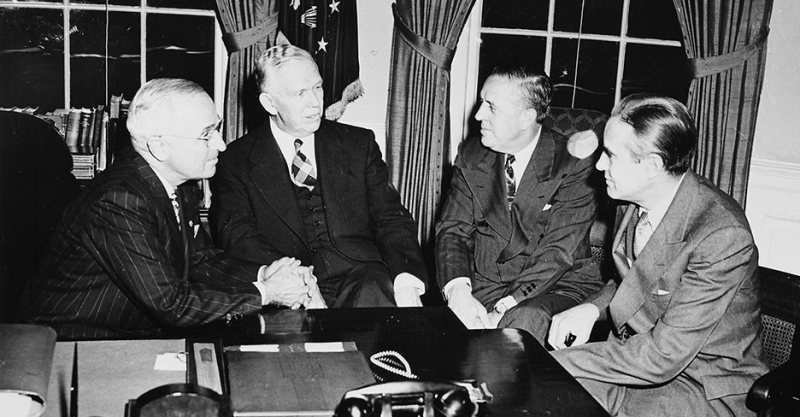
afsa.org 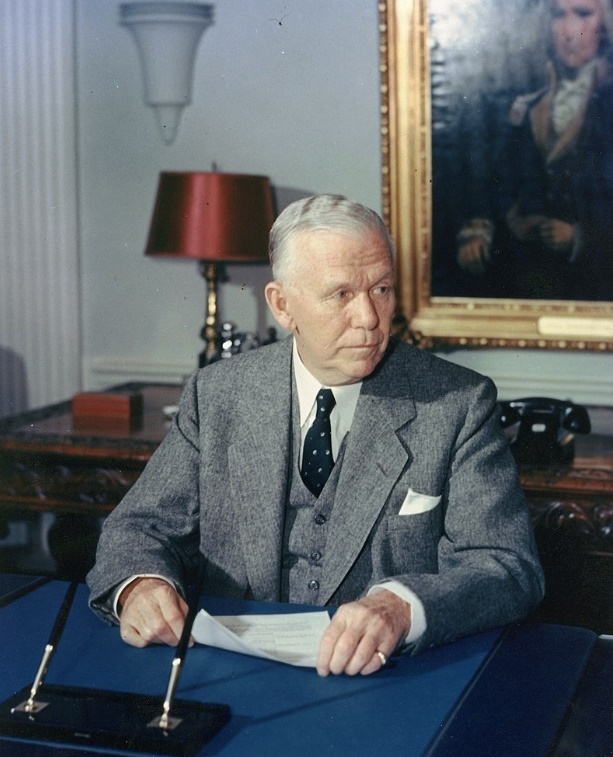
thereaderwiki.com -
It is a fact that George Marshall died of a series of strokes. Marshall died on October 16, 1959, at Walter Reed Hospital in Washington, D.C., due to a series of strokes. Although he was entitled to official proceedings, Marshall wanted simplicity, thus he was given a special military burial that omitted many of the regular rituals. The ceremonies featured a 24-hour lie-in at Washington National Cathedral, guarded by representatives from each of the United States armed services and a VMI cadet.
President Eisenhower ordered that flags be flown at half-staff and was one of 200 people invited to the funeral service at Fort Myer. Former President Truman, Secretary of State Christian A. Herter, former Secretary of State Dean Acheson, former Governor W. Averell Harriman, and Generals Omar N. Bradley, Alfred M. Gruenther, and Matthew B. Ridgway were among those there. The chapel and graveside ceremonies were led by his parish priest, Franklin Moss Jr., of St. James Episcopal Church in Leesburg, with assistance from the former chief chaplain and National Cathedral Canon the Reverend Luther Miller. There was no eulogy, as Marshall had requested. Following the burial service, a 19-gun salute was fired, and a bugler played taps. A VMI cadet folded the flag that covered Marshall's casket and presented it to Mrs. Marshall.
Marshall was laid to rest alongside his first wife and her mother, Elizabeth Pendleton Coles (1849-1929), in Section 7, Grave 8198 of Arlington National Cemetery. His second wife, who died on December 18, 1978, was also buried with him. The reverse side of the marble headstone lists General Marshall's positions: "Chief of Staff United States Army, Secretary of State, President of the American Red Cross, Secretary of Defense." The five-star level is engraved on both sides of the stone.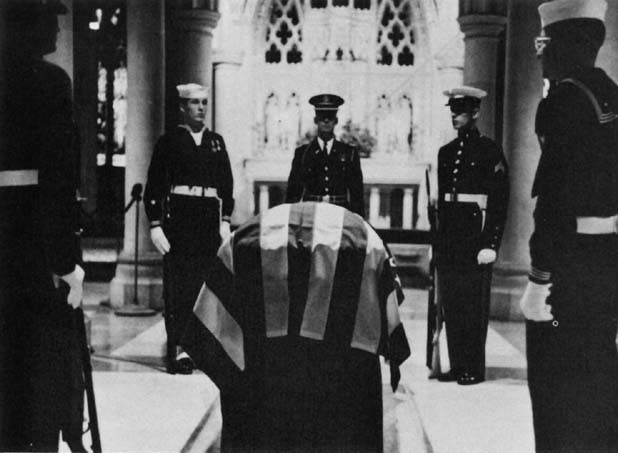
history.army.mil 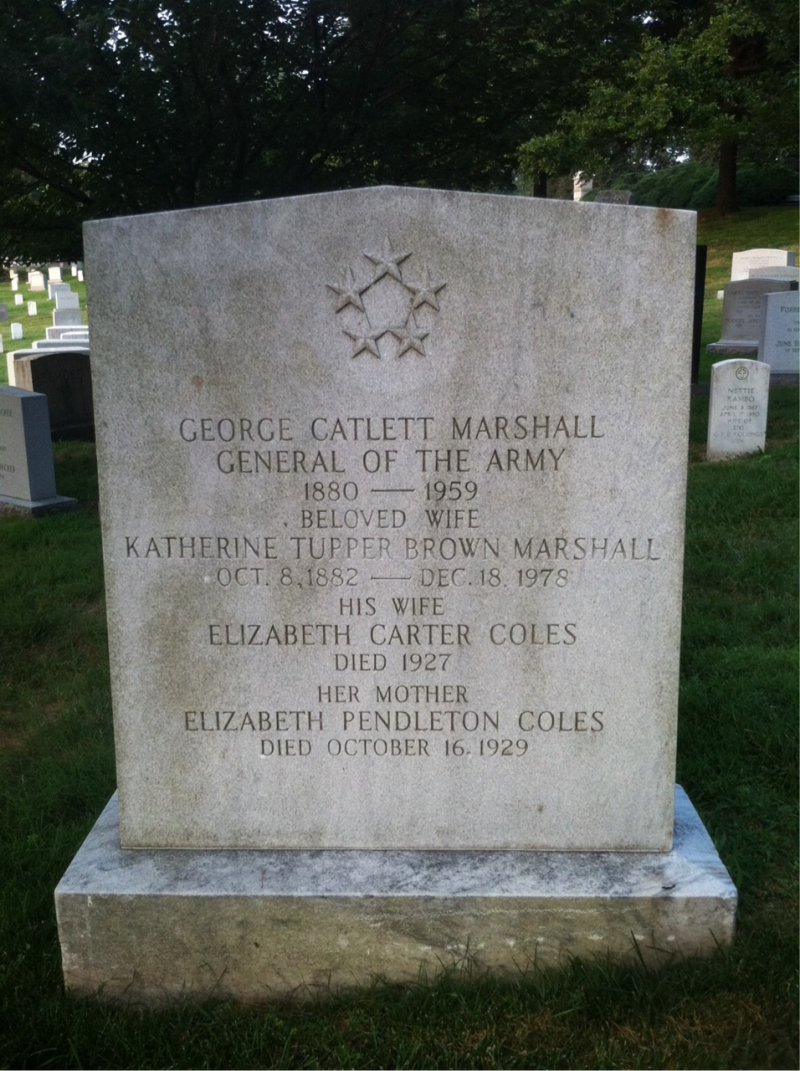
George Marshall's grave -commons.wikimedia.org









